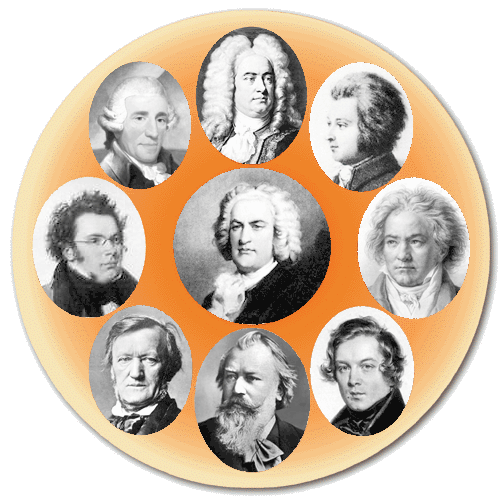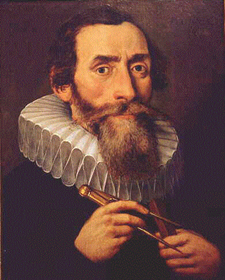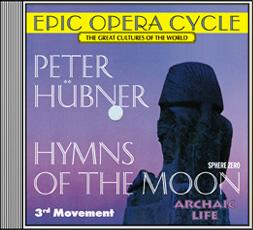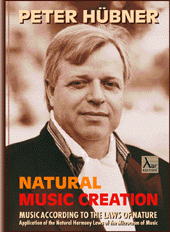Our great classical sound creators then also pursued new intuitive methods, and their previous systematic inner realisation and application of the natural laws of harmony of the microcosm of music we nowadays call our “History of Music”. And musicology pursues the empirical scientific method with the help of large special laboratories.
|
Scientific Music Medicine |
| Home • Site Map • Research • Reports • Intern. Experts • Music Preparations • Fundamentals • Store • Contact |

Peter Hübner – Nature’s Laws of Harmony in the Microcosm of Music
Intuitive Research of the Microcosm of Music

Our European history of music marks the way of intuitive research of the microcosm of music through our great classical sound creators.
This tradition was interrupted with the creation of twelve-tone music, and is today continued by the classical sound creator Peter Hübner.
This tradition was interrupted with the creation of twelve-tone music, and is today continued by the classical sound creator Peter Hübner.

The famous musicologist and astronomer Johannes Kepler also reaffirmed that the paths of the stars follow the same laws of harmony as the inner sound paths or developments in the microcosm of music. Indeed, Kepler even originally calculated the planetary orbits on the basis of his music theoretical findings.
Applying the Laws of the
Microcosm of Music
to the Course of the Stars
Microcosm of Music
to the Course of the Stars
Particularly in today's music, we must learn again to realise the democratic interplay of many rhythms. The natural microcosm of music does not know a rhythmical fixation or dictatorship of a certain nature – as, by the way, neither does the whole of nature.
Not even within an atom there seems to be structurally any kind of rhythmical dominance, but the influences of the individual oscillations seem to be continuously changing.
And if, for instance, every single of our human organs has its very own, but changeable rhythm – of which today's medical science has already recognised hundreds of different, changing basic rhythms – one still cannot talk of the rhythmical dominance of one of our organs compared to an other one, but in fast alternating change, sometimes this one, then the other one has the rhythmical dynamic upperhand.
Not even within an atom there seems to be structurally any kind of rhythmical dominance, but the influences of the individual oscillations seem to be continuously changing.
And if, for instance, every single of our human organs has its very own, but changeable rhythm – of which today's medical science has already recognised hundreds of different, changing basic rhythms – one still cannot talk of the rhythmical dominance of one of our organs compared to an other one, but in fast alternating change, sometimes this one, then the other one has the rhythmical dynamic upperhand.
“ ‘Natural’ music is music created intuitively oriented towards nature and in accordance with the laws of nature – music which originates in the composer and accordingly in the interpreter in unison with the laws of harmony and nature: completely playfully and without any effort whatsoever.”
 |
||
|
||
With kind permission of AAR EDITION INTERNATIONAL
© 1998- SCIENTIFIC MUSIC MEDICINE | Contact
Subject to change in the interests of scientific advancement.
© 1998- SCIENTIFIC MUSIC MEDICINE | Contact
Subject to change in the interests of scientific advancement.


